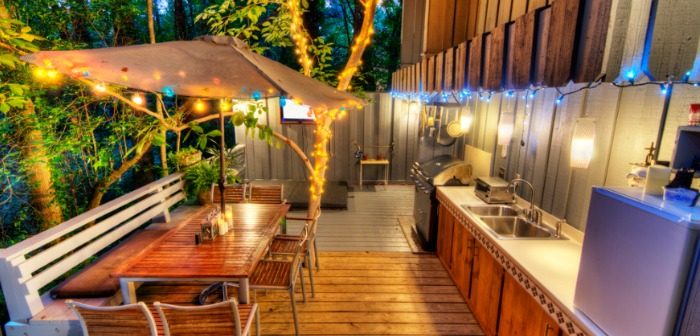Having a patio you’ve always wanted opens the door to many decisions. They may be as important as deciding how you will furnish your living room because the options can be as numerous as these https://www.skylarshomeandpatio.com/collections/living-room.
Outdoor living is enjoyable in itself, but the pleasure multiplies when your patio speaks to you in the language of beauty. Choosing the perfect colors for your patio is the first step of the project.
If you feel unsure about which route to take, we have gathered some insider guidelines to make the choice as easy and informed as possible.
The rule of three
The 3-color palette is the little black dress tactic. If you are unsure how much of each you should go for, the golden ratio is 60-30-10. Choose one color to dominate, another to complement it and the third is used for accents.
Complementary colors
TA color wheel is a handy tool for your patio design contemplations. Colors that are exactly opposite each other on the wheel are called complementary, for example, violet and yellow.
Their combination produces a vibrant effect, but you should lose them. Too much vibrancy can feel overwhelming so you can anchor them in some neutral colors to steady the effect.
Analogous colors
Still playing with the color wheel – analogous colors are combinations of two or three colors that sit next to each other. These combinations are often found in nature and look serene and pleasing to the eye. If you’d like your outdoor space to be your relaxation haven, these palettes are a good pick.
Neutral colors
There’s a trend in contemporary spaces to have a streamlined décor. If you like this smooth effect, you should opt for neutral colors with little variation.
To add a few drops of accent, go for darker colors of the same family or for darker colors found elsewhere in the patio surroundings, in sculptures, pots, vases, and such.
Camouflage
If your outdoor space is particularly lively in terms of landscape, you may want to have low-profile patio colors that will not steal the yard’s thunder. You can achieve this effect by opting for colors that will blend in the landscape, hardscape or the home’s exterior.
Warm vs. cool
Similarly to complementary colors, you can add dynamics by combining warm and cool tones. It will go easy on the eye, but it’ll still give off a vibe of slight tension or playfulness.
Ground colors in the largest pattern
If there is a large pattern on your patio, right from the start, use the colors from that pattern to come up with your patio palette. For example, if you have a striking outdoor rug or a lively arrangement of flowerbeds, you can use those colors as your starting point and use one of the principles we mentioned above.Take three colors that are most present and distribute them in the ratio 60-30-10. For accents, you can use colors complementary to the rug or flowers. Or you can use colors analogous to those found in the initial pattern.
Base colors off your clothing style
When in doubt what colors to choose for your outdoor living, turn to your closet. What do you like to wear? Chances are that your patio will feel as comfy and cozy as your favorite outfit if you go for the colors that make you feel best.




